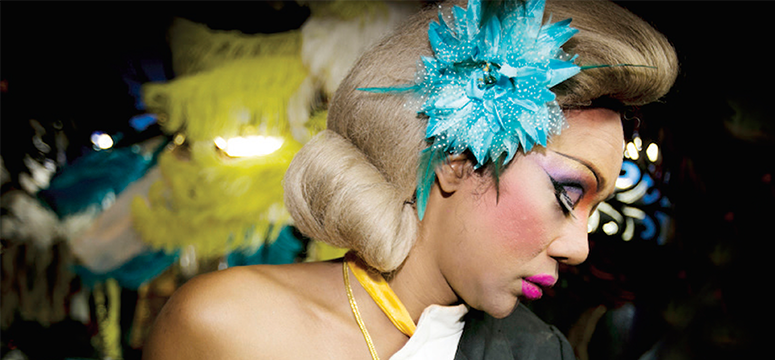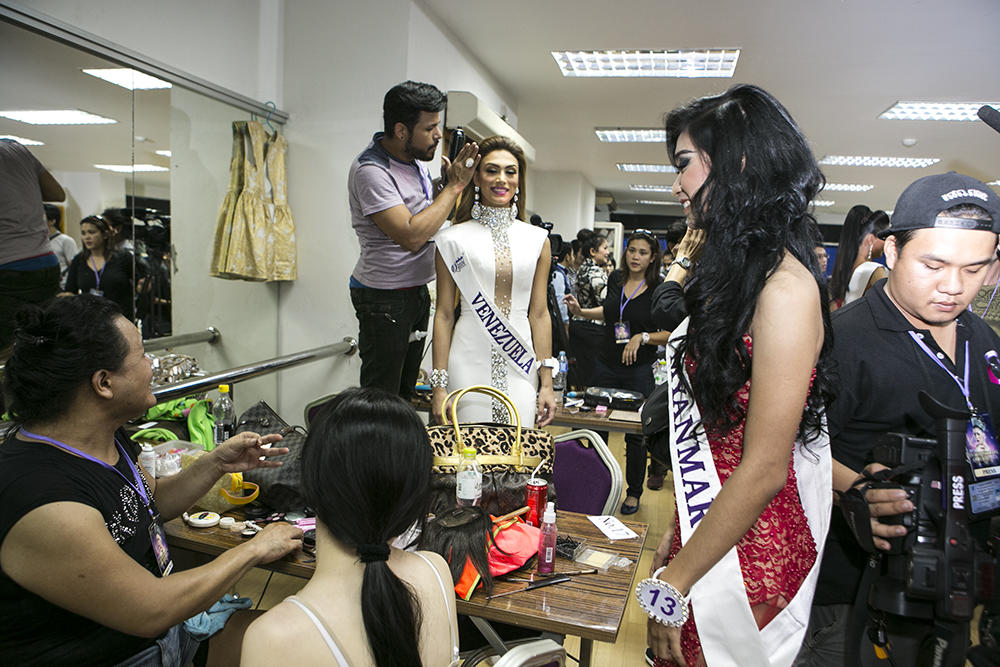
This photo is part of Kloie Picot's exhibition, Trans Life in Asia: A Photographer's Journey.
Kloie Picot

This photo is part of Kloie Picot's exhibition, Trans Life in Asia: A Photographer's Journey.
Kloie Picot
“Hold on …”
You can see how far Kloie Picot, the social worker, has come since beginning her degree. The Bachelor of Social Work student at the University of Calgary is in the final semester of her two-year program and, not surprisingly, before she answers any questions about her exhibition of photos, she insists on providing some framing.
“I just want people to know that I'm not transgender, and I’m not part of their community,” she says, “so I can't and don’t pretend to speak for their community. That's why I'm calling my exhibition A Photographer's Journey. My curiosity took me on this journey with the goal of giving my subjects — many of them became my friends — a voice. So in the exhibition there will be video and audio of their shows and audio of them telling me their stories. I’m also still in contact with many of them, so I asked them to write something, which I'll read it at the opening.”
Kloie Picot, the photographer, is in the middle of a special exhibition which runs for the rest of this week in the Faculty of Arts, The Little Gallery, on the 6th floor of the Art Parkade. The exhibition, Trans Life in Asia: A Photographer’s Journey, is part of Exposure, Alberta’s Photography Festival.
Photos show glamour and grit of trans life in southeast Asia
The photos were taken across southeast Asia over six years where Picot developed close friendships travelling to seven countries including Thailand, Malaysia,Taiwan, Indonesia, Singapore, Cambodia and Myanmar.
“I met an incredible transgender woman — a sex worker in Chow Kit, in Kuala Lumpur,” explains Picot. “It's a very dangerous area where tourists usually don't go, but through her, someone who's been on the street for probably 10 or 15 years, I was protected, and really got straight access into the life of sex workers in that region.”
Over their six-year friendship, Picot says she and her camera became almost invisible — part of the local landscape. This intimacy can be clearly seen in the series of stunning portraits, which capture the glamour of trans beauty pageants and Thai khatooey or “ladyboy” shows, to the mundane details of everyday life. The exhibit’s study in contrasts includes a trans woman engaged in sex work with a John, alongside photos of Shinta Ratri and the world’s only Islamic school run by and for transgender women.
“She inherited a home and turned it into a learning center to learn the Koran,” explains Picot. “So there's an Imam who comes in to teach the trans community about Islam, and they pray there because of course as trans women in Indonesia, they have no mosque they can go to.”

Picot's exhibition shows the glamour and grit of life for many in southeast Asia's trans community.
Kloie Picot
How curiosity led photographer to passion ... and social work
Picot admits that her photographer’s journey began with curiosity but grew out of friendship. Her decision to pursue social work education in some ways emerged from her desire to use her privilege and talent to shine a light on oppression of marginalized communities and a platform to be heard.
"Most people, especially marginalized people, want to tell their story,” says Picot. “Especially those who haven’t been able to tell their story except to their own peers ... People want you to know what they've been going through. As a photographer I tend to photograph marginalized social issues. For example, poverty is a root cause of many of these problems, along with a lack of access to doctors. This meant that many of the trans women couldn’t find help with hormone treatment in transitioning, or for surgery. So a lot of the times they self-inject and they give themselves excessive doses of hormones. While I was there, there were a couple of my friends who died from overdoses of hormones and too many silicone injections.”
Picot says while her show is gritty, it’s also beautiful, and that most of all she hopes people come so they can see and hear the voices of her friends. “It has to be that they tell their story,” says Picot. “I captured their images and I hope through the images and audio and video they can tell their stories and people can understand a little more about them and the issues they face.”
Tags